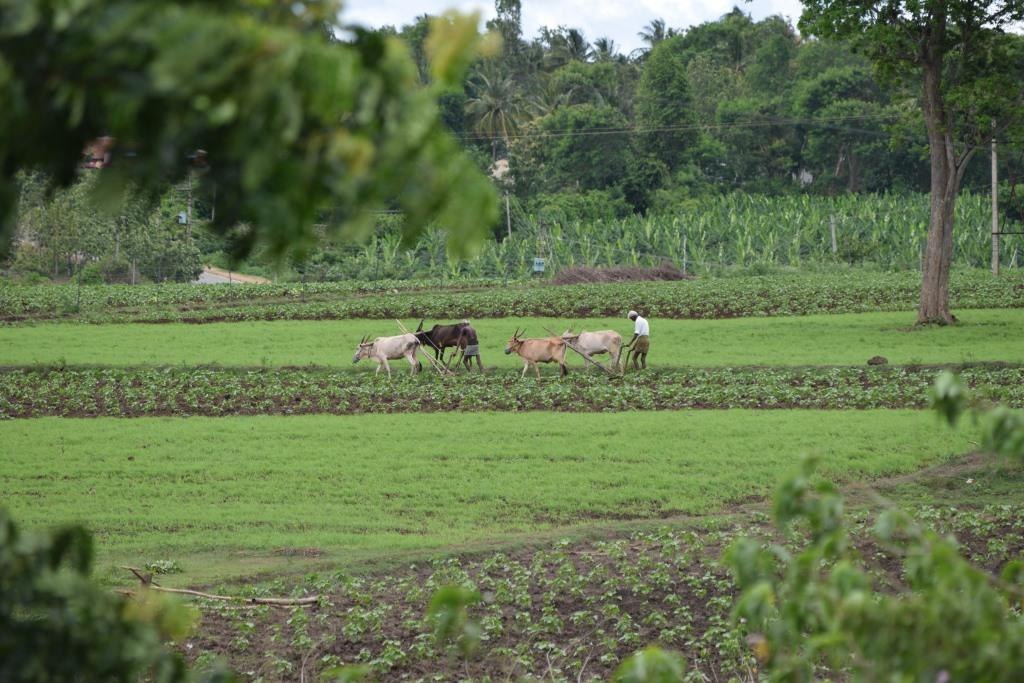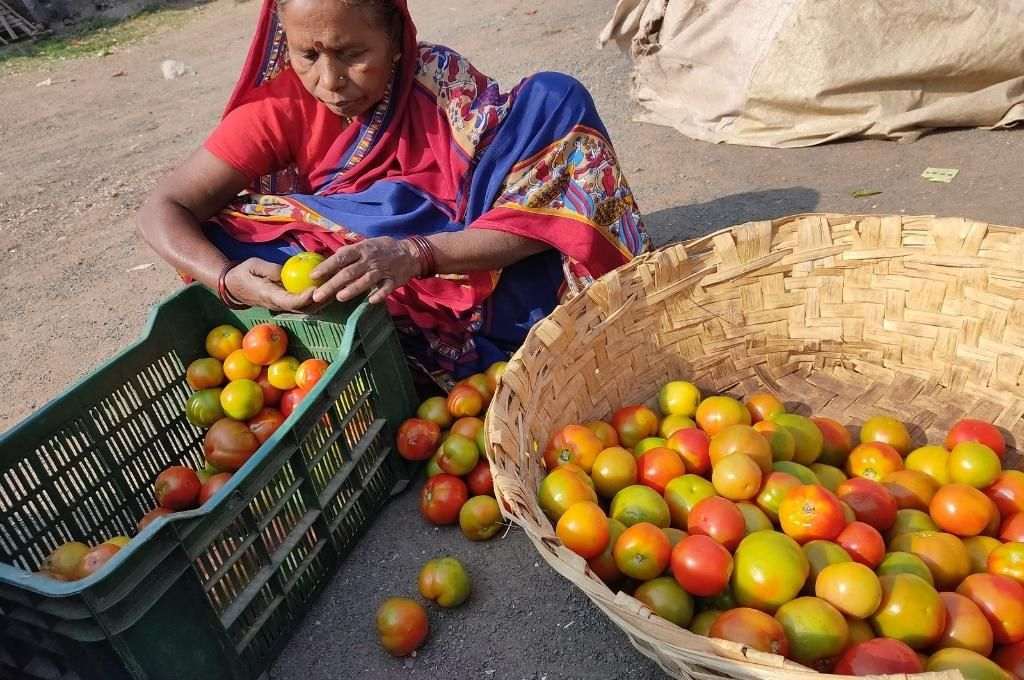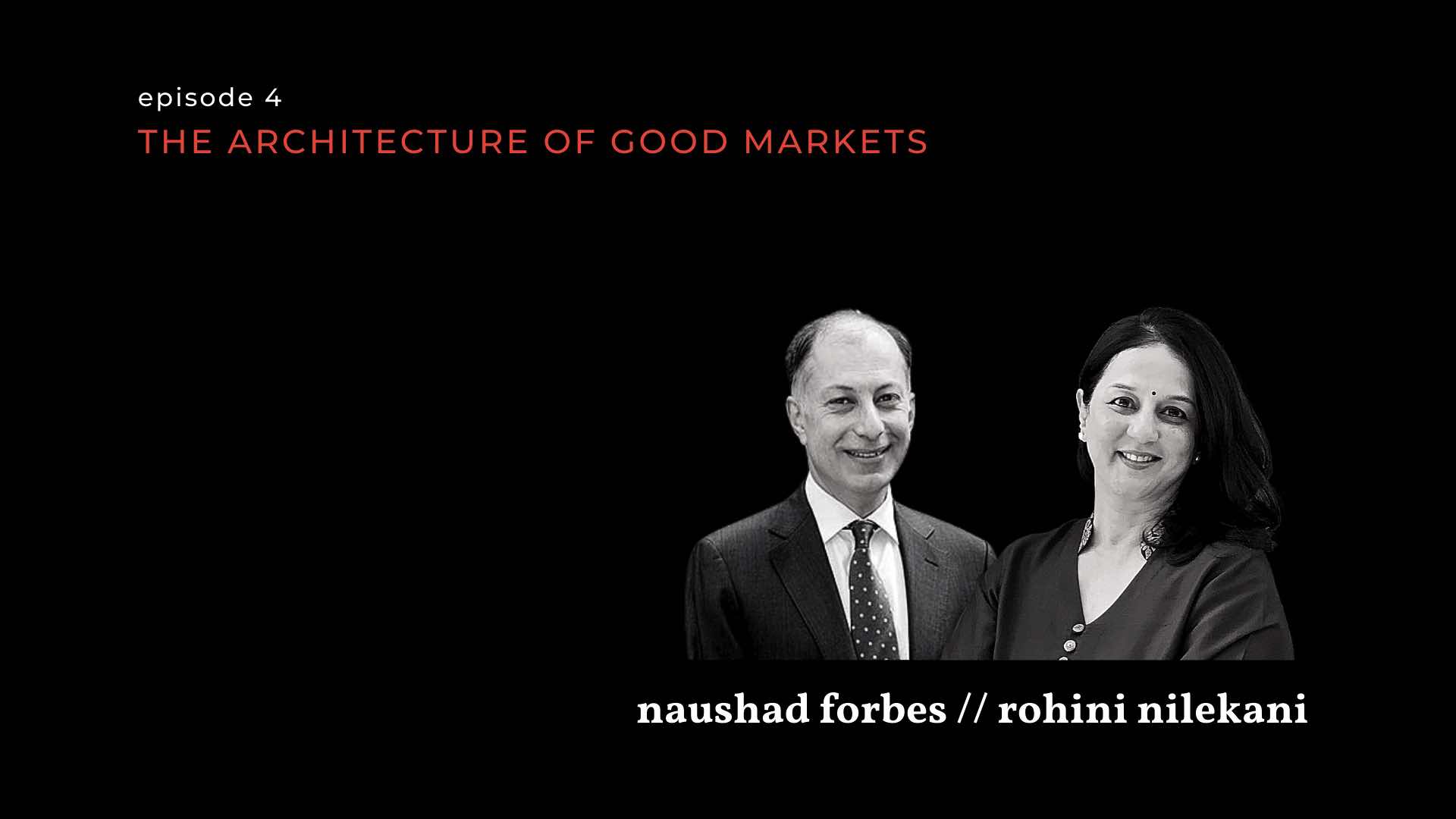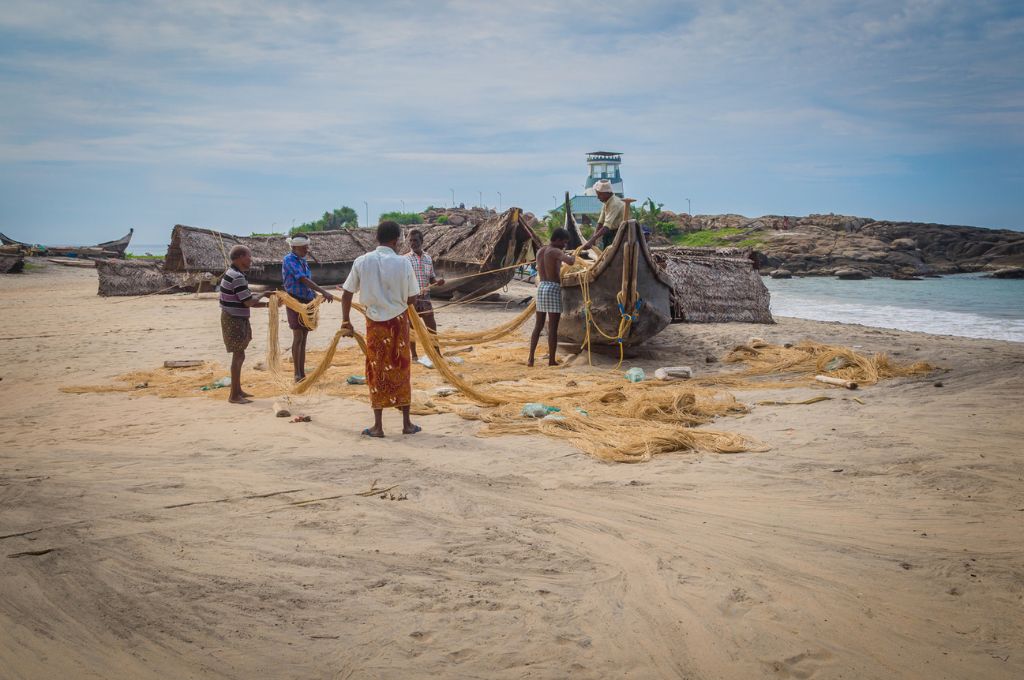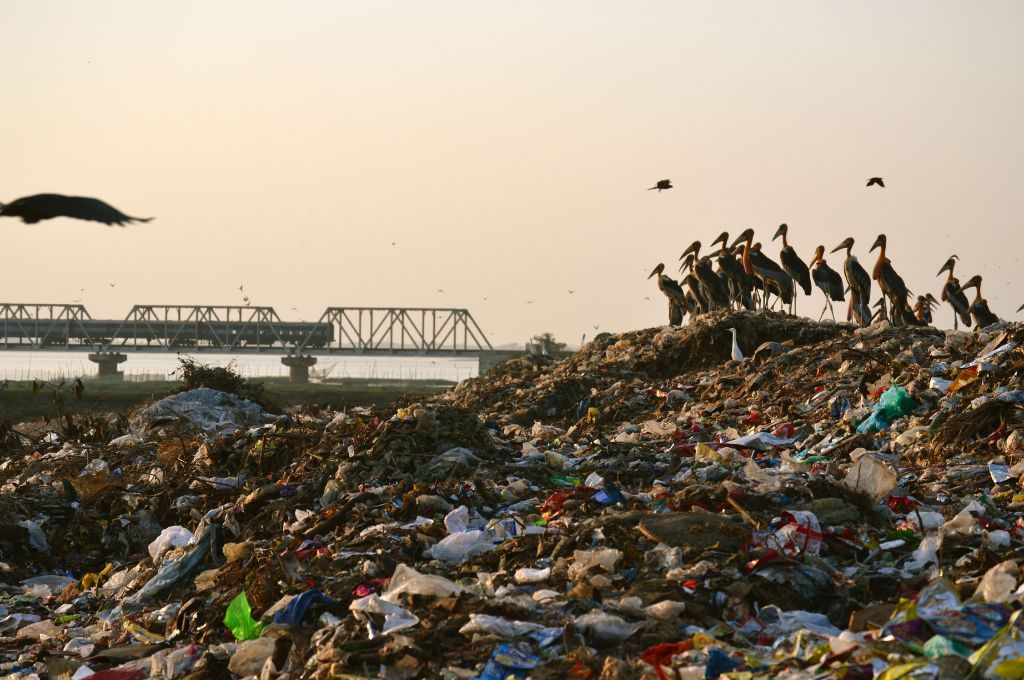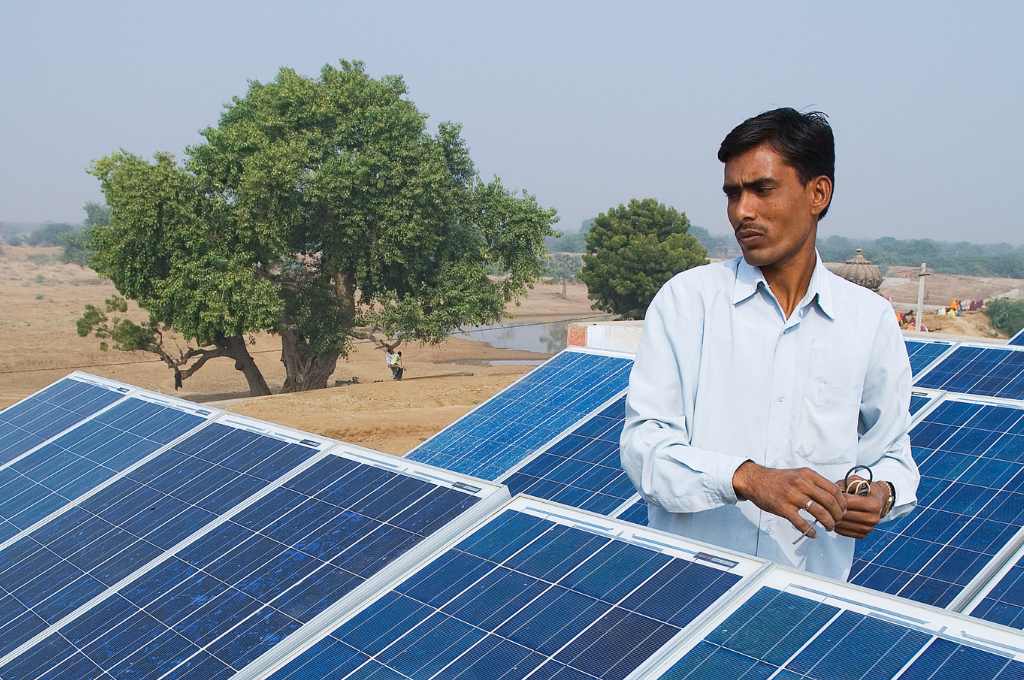Edited transcript of the episode:
00.35
Rachita: Today I’m in conversation with Mark Kahn and Crispino Lobo.
Mark co-founded Omnivore, a leading agritech-focused venture capital firm that has been operating in the agriculture and food systems space since 2010. Mark is the former executive vice president of Godrej Agrovet, one of India’s foremost diversified agribusiness companies. He has a deep understanding of the agribusiness space in India, and is currently the co-chairperson at Confederation of Indian Industry Task Force on Agri Start-ups.
My second guest Crispino, has nearly 30 years of experience across integrated water resources management, sustainable agriculture, climate change adaptation, and policy development. He co-founded four grassroots nonprofits that have collectively impacted the lives of more than 2 million people across 4,000 villages in India. Crispino has also been a regular participant in the pre-budget consultations on agriculture over the last 20 years.
Today we’re talking about what needs to change in India when it comes to agriculture, especially given the climate crisis and its impact on our food systems. Most of India’s farming sector already struggles with low productivity and poor earnings. And 85 percent of farmers are actually smallholders; their livelihoods are extremely vulnerable to the impacts of climate change. So, when we think about agriculture, we need to think about developing climate resilience, especially among the people working across the farming value chain. And Mark and Crispino are here with me today to do just that.
2.07
Rachita: So, Mark, I’d like to start with you. What do farmers in India need most today?
Mark: I think farmers in India really struggle with four primary challenges. The first is a challenge of profitability. Just on a per hectare basis, they don’t make enough money. The second is a challenge of resilience. From month to month, year to year, there are wild, wild swings in income that make their lives just frankly more difficult than they need to be, more difficult than the most-stressed-out start-up entrepreneur because at least they’re not worried about what God’s going to throw at them next in the form of, you know, hail or insects or some other biblical plague.
Third, they need to operate in a more sustainable ecosystem. Because the resources around them are basically in free fall—the soil from year to year is getting worse, the water tables are collapsing. And, finally, they’re facing this great challenge of climate change, where the weather has become much more erratic, temperatures have risen. And so when you put it all together, it’s a tremendous burden for farmers.
Unfortunately, for a very long time, we have [had] this kind of legacy, Green Revolution thinking, which simply said, “Oh, well, all farmers need to do is produce more food, and then they’ll make more money.” And let’s be clear, that was certainly the case in 1965, when the Green Revolution really started in India, definitely, probably still the case in 1975. But the situation, the macro situation, of India’s agricultural economy has changed. The challenge that we face in India, and the problem no one explained to policymakers, is that we’ve gone from being a food-deficit country to a food-surplus country—we are a net exporter at this point, and it took a long time to get there. And it’s a remarkable achievement when you think about it—feeding 1.4 billion people and having net exports. But we now face, in many crops, a problem of plenty, not a problem of scarcity, which means, in practice, our situation in India is more like every other agricultural economy in the world, like Europe, like the United States, like Brazil. The only difference is that we have 130 million farmers dependent on it, who are almost entirely smallholders.
And so, at Omnivore, we think that these four pillars—the pillar of profitability, the pillar of resilience, the pillar of sustainability, and the pillar of climate action—are sort of the right way to think about, in aggregate, the challenges faced by farmers, and start finding some solutions.
5.07
Rachita: Thanks, Mark. Crispino, you have been working for a very long time at the grassroots. So, I want to ask you what your take is; if you asked farmers what they need most today, what would they say?
Crispino: More remunerative prices, that’s the first thing; they have to be profitable. Number two, water is becoming a major crisis now. And, you know, particularly for 70 percent of the farmers that depend on rain, this is becoming a critical constraint. And, therefore, securing water at least for protective irrigation, so that they can complete one crop cycle, is very important.
There is a huge wastage from farm gate to the end consumer; as much as 30 to 40 percent of fruits and vegetables get wasted.
The next is, you know, there is a huge wastage from farm gate to the end consumer; as much as 30 to 40 percent of fruits and vegetables get wasted. And that, of course, is factored into the end price finally, or what the farmer is not able to get. It’s important that this post-harvest technology and the whole value chain, as well as the whole road from the farm gate to the consumers’ plate, is addressed in terms of waste reduction and efficiency enhancement so that greater returns can go to the farmer.
The fourth thing is weather variability or climate change that is really affecting farming, creating serious losses, and also technologies of crop management, I mean with regard to the challenge of managing crops in such highly variable weather conditions.
So the whole issue of building adaptive capacities, responding to weather risks is also a major challenge facing farmers. Skill upgradation and technology adoption is another big challenge. Mostly farmers are conservative by nature and they are slow to adopt technologies. But, without that, you would not be able to easily handle some of the challenges you outlined.
6.52
Rachita: Since you mentioned the agricultural value chain, before we move to my next question, could you briefly walk us through the process, from production all the way to consumption?
Crispino: So I think I’ll walk you through the farm gate, then I’ll leave Mark to take you to the consumer, to the marketplace. So the first thing is to decide on the type of crop you grow and when you sow it. There are many variables in this which decide whether to sow and, if sown, the quantity and the variety of crops because sometimes you need to take an insurance policy and diversify your crops. So that’s the first thing.
And then the next thing is to get good-quality seeds, which is not a given. Sometimes in the market it’s quite difficult to get good-quality, certified seeds. You need to also get the right inputs that go in, you know, in terms of the appropriate fertilisers or growth stimulators, and, you know, pest and disease control inputs, all these have to be brought together with labour at the right time. There’s a small window of opportunity for sowing; you have to do it in a certain fixed period. If you miss it, then it’s going to impact your productivity and even your decision to sow or not. So getting in sufficient labour and machinery, or equipment, or bullocks or whatever is used to be able to undertake [this in] full swing is another challenge you have to face. Then you’re also battling unexpected weather changes, you know, or weather events. And you got to be prepared for that also. So these are some of the challenges that you’re faced with when you start out the farming operation. And then, finally, harvest time is another big challenge in terms of getting labour or machinery to harvest, or equipment to harvest and to process, in a very basic processing of the production. Storage becomes an issue and, by that time, often the farmer is practically broke. I mean, his cash reserves have come down drastically, and he needs to recover some of the money that is put into the production to pay off his debts as well as to meet his own needs, including for the next season. Often, it’s at this point that, because of his desperation, he loses market power, and has to sell at prices that are often not remunerative or attractive.
That’s to the farm gate. Over to you, Mark, take it to the market now.
Mark: Look from the farm gate, it really depends crop by crop, right? So you first kind of have to ask, are we talking about perishable, you know, non-perishable commodities, are we talking about perishable horticultural crops. I mean, they’re just very different value chains.
The reality is that for many farmers, they already know who they’re selling to at the end of the season, because a lot of times it’s the person that lent them money. And so this begins value chain by value chain. This is the first point of aggregation.
Once it’s into the value chain, once it’s into the midstream, then it gets sold trader to trader or trader to processor. So, for example, let’s say I’m in Madhya Pradesh, and I grew soybeans, I definitely am taking that into a market, I’m selling to a trader. That trader might then sell to another trader who sells to a processor at which point the soybeans are turned into soybean oil, which is consumed by all of us, and soybean meal, which either goes into the poultry value chain or gets exported. If we’re talking about sabzi, if we’re talking about kind of fruits and vegetables, in many places, those have been moved out of the mandi system. So I’m dependent on a local trader.
In almost every value chain in India, there are multiple points, multiple intermediaries in between the farmer and the end consumer, almost without a doubt.
Cotton is obviously very different; sugar involves these giant mills. So it really depends on the value chain they’re in. But in almost every value chain in India, there are multiple points, multiple intermediaries in between the farmer and the end consumer, almost without a doubt. And every one of those intermediaries has a cost to finance; every one of those intermediaries takes the cut.
The other thing that we have to understand is that this system also reflects policy. India, whether we want to admit it or not, has had a cheap food policy for the better part of all of the decades since Independence.
11.07
Rachita: I want to come back to the point on policy a bit later. You spoke about the terms of trade for farmers, and the implications of that. As the climate crisis worsens, farmers might find themselves caught between growing what the market wants, and what’s better for the climate, or what’s better to grow in their region from an ecological standpoint.
Mark: I don’t think this is the problem. I think the reality is that what the farmer grows is oftentimes a function of policy. That is certainly not always the case. You can never say, “Oh, someone’s in poultry because of policy or someone’s in silk because of policy.” But if we looked at a lot of crop value chains, particularly around sugar, around rice, around wheat, which to be clear are three of the, say, five largest crops in India, they are insanely influenced by policy decisions [and] by commodity procurement decisions. The fact that we have the kind of concentration of sugar growing that we do have in Maharashtra is a function of policy, that we allow that industry to continuously strip mine the water of the state is a function of policy.
I think the reality is that when farmers are making their own decisions about what to grow, when you don’t have a crowding-out effect, which is what effectively this is, this is the only thing I can compare it to, it’s a perverse set of incentives created by the public sector. Farmers mostly rationally choose things that they think are both remunerative, that are not, you know, water-guzzling monsters, and that they think, you know, work for the value chains that they would naturally operate in.
12.51
Rachita: Okay, so what would you change then? From a policy standpoint, when it comes to sustainable agriculture, what do you think the government needs to change?
Mark: What I’m saying is that if you actually want to be serious about sustainability, and you want to be serious about climate, what you need to be serious about is water. And that requires taking a look at water as, you know, an asset, a critical asset, an area of national security in India, you know, and then asking the simple questions: Where are we destroying that asset? What is the value that is being created for that asset destruction? And is it worth it? Is having a sugarcane industry, right, as large as we have, which, as I’ve gotten in trouble for saying, takes our most precious natural resource and converts it into obesity and diabetes, right, converts it into the problems of the Indian middle class, is that a worthwhile trade? These are actually real decisions that have huge implications for Indian agriculture. And I think government policy needs to reflect climate; it needs to look at water as an asset that needs to be protected.
14.01
Rachita: Crispino, you’re the expert on water. What’s your view on this?
Crispino: No, I agree with policy being a very major driver of crop production in India without a doubt. Maharashtra, for instance, is a semi-arid state by and large; it’s a dry state. We don’t normally grow sugarcane. But it started already in the 50s by virtue of a policy decision, and that’s true of whole value chains, including milk production, which doesn’t mean that all policy decisions are bad. It simply means that policy does affect farm decisions in this country substantially. Indian agriculture consumes something like 82 to 84 percent of India’s freshwater, and that’s huge. And when you look at what they call the productivity of water, that means the output per unit of water used, we are among the lowest in the world. I mean, it’s abysmal. Okay, so there’s huge area for improvement there, which means more application of technology, more application of knowledge and science.
One of the things that determines prices is the balance between supply and demand, so when there is a glut, obviously the prices go down. Last year, in the case of chillies, the price came down in the kharif to two rupees a kilo. Now, the previous year, they had a great price, so all the farmers went in for that. So, there was a glut, it crashed. Now, last year itself, during the last two–three months of the cropping season, they abandoned the crop in the field. Now the price is 80 rupees a kilo. So can we develop a market intelligence system wherein we, keeping many factors in mind, advise farmers on what are the crops that are likely to be produced and the quantities and how it’s going to possibly affect the price that farmers received.
When we talk of nature-based solutions, we actually need to accept that we have a lot of science still to be uncovered and applied.
The other point is with regard to nature; I think there’s a very strong case to promote techniques that are nature friendly or what they call nature-based solutions, which is not to decry the use of synthetic or inorganic chemical—that’s not either/or. But there is a case and a huge envelope of opportunity. We have found, for instance, that if you take what is called integrated methods, they will include both synthetic as well as organic or other nature-based inputs, you can have substantial gains in productivity, and also considerable reduction in cost of production. So organic inputs that are so essential for nature-friendly farming need to be addressed seriously on a war footing. It is nature, in fact, and its networks of relationships, energy exchanges and nutrient exchanges, where we as yet have still to develop the science to even understand that. So when we talk of nature-based solutions, we actually need to accept that we have a lot of science still to be uncovered and applied where we have technology or organisational inputs to make nature-friendly farming economically possible at the scale and productivity levels that we require.
16.48
Rachita: Okay, so there’s a lot that we need to do, and it needs to have happened yesterday. So, is there reason to be optimistic as we look ahead at the next few decades?
Mark: Yeah, I mean, look, I think there’s reason to be optimistic. Because, you know, the reality is India, for all of its challenges, is also a nation of immense resources. We have very, very strong scientific capabilities, we have, you know, a belief in the need for food security, to never go back to the ship-to-mouth existence that we had in the 1960s. Farmers vote, and increasingly are showing that they can have political power. It’s been a long time since that was the case. But I think the one very good thing that came out of what happened with the farm laws was a flexing of rural power. Even if I don’t love the outcome, I love the fact that democracy worked.
When push comes to shove, the government will make changes to fundamentally reform agriculture, but I believe they’ll do it when they have to.
And so I have a lot of optimism, actually, that when push comes to shove, the government will make changes to fundamentally reform agriculture, but I believe they’ll do it when they have to. India didn’t abandon socialism and the License Raj because, you know, there was a national consensus; they did it because they were broke. Okay, I guess we have to give this up. We knew it was bad, right? For two decades before we gave it up. But we finally gave it up when there was not a penny left in the bank to continue the perpetuation of this atrocious economic system.
I suppose something similar will happen in ag[riculture] that eventually things will get to a crisis point. And crisis is when things suddenly change in remarkable ways in India, but there’s also, suddenly when faced with a new set of facts, a willingness to change radically overnight, which I think is great.
18.33
Rachita: Crispino, do you agree?
Crispino: Yeah, I think we’ll survive the crisis we have. And we’ll find a way out of the mess. But we will only do it when the fire is behind us. So with regard to going forward, I think if you want to add greater value of money in the hands of the farmers, maybe just three quick points. One is we need to reduce the wastage that goes from farm gate to the end consumer, because that’s 30–40 percent factored in already in the end price, which the farmer will not get. So, maybe a part of this then can accrue to them.
The next is we need to get farmers into the value chain, you see, the real money is made from the gate onwards to the consumer. And so, for instance, the farmers in the milk industry, which is you know, organised with rich sugar, for instance, even then, they make money because the value chain has been well developed and farmers are part of that as actors, not only as beneficiaries, but as actors and decision makers, you know, in whatever level, we need to also introduce that in the other value chains in the country progressively. And one way out, a good possible sign is this establishment of pharma companies, you know, whether it is a producer company or your FPO [Farmer Producer Organisation], or even cooperative, any aggregation, formal aggregation of farmers, which can change the negotiating stance or ability, is a way forward, in my opinion, slowly, and progressively, they will enter the value chain, and we should push them more in that direction. Okay, not everyone will succeed. But there are some that will do it and open the pathway for the future.
Third point is there is a reason why there are intermediaries and middlemen or levels, there is a reason. But there is a need to reduce those levels [so] that that value that was embedded in those levels moves more of it to the farmer. Inevitably, there has to be policy backing, there have to be resources put in by the government over the long term. These things don’t happen overnight, intergenerational, often, but the government has to be backing these moves towards greater transparency, greater formalisation, and greater incorporation of the farm in the value chain.
Mark: I think I would add one point to that, which is that I think for every crop that is being produced, we need to ask the question, why is it not being processed? Why is it not, right, being disintermediated? Meaning sold directly from the farmer to the consumer? Or why is it not being exported? Right, and I think those three levers are the way that we need to kind of view crop by crop. I think water-efficient exports are a tremendous need of the hour.
The challenge of Indian agriculture in the last 20 years is we went from a problem of scarcity to a problem of plenty.
So part of the challenge right now is, you know, for a long time, we have this very Green Revolution mentality of like the problem is the yield. Right? Our tomato yield is half of China’s, let’s double it, cool. You know, what happens if we double the tomato yield? Next year? We have the streets of Maharashtra paved in tomato paste, right? Because we actually don’t have a market for 2x the tomatoes, right? It’s not like all of a sudden everyone’s going to consume two times the number of tomatoes. Right? And, in practice, what will happen is that the price will crash. And, again, the challenge of Indian agriculture in the last 20 years is we went from a problem of scarcity to a problem of plenty, which is the same problem faced by every country, every developed agricultural country in the world.
And so the question then becomes, okay, if we want to help our poor farmers make more money, we have to find markets for what they grow. So how do we do that? We have to add value to what they grow. We have to export what they grow, we have to disintermediate. If you can imagine like if India was exporting, I don’t know USD billion of mangoes a year, which by the way, is not impossible. India could be, you know, if India had agricultural exports, horticultural exports like Latin America, farmers would be seeing much more money coming to them for horticultural, for bananas, for mangoes, for all the stuff that we produce and don’t export. It is an insanely large opportunity. But you have to build the supply chain to do that. But you also have to be willing and once we have that in place, then it’s a great opportunity because then, by the way, let’s talk about doubling the mango yield. Okay, because then we’ll have a market that doesn’t involve this surplus produce rotting, and not actually, you know, and prices crashing as a result. I think there’s a lot that can be done if we kind of think from this framework of can it be exported, can it be processed, meaning it’s no longer perishable, you know, and capable of being stored, you know, and can it be disintermediated, that’s kind of how we think value chain by value chain.
23.14
Rachita: Thanks, Mark. I think both of you have very clearly articulated the complexity of the task at hand when it comes to Indian agriculture. Like you’ve said, while there are many steps different players can take, ultimately, policy plays a big role in determining what gets cultivated, how the system is set up and who benefits, and how sustainable our food systems actually are. It seems to me that in order to work towards climate resilience, we first need to fix what’s not working in the current system, so there is greater transparency, formalisation, and so farmers can capture more value from the agricultural value chain.
—
